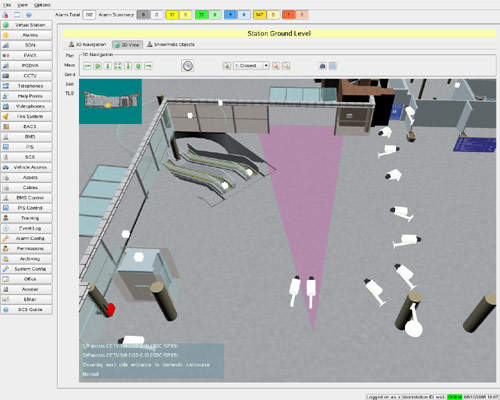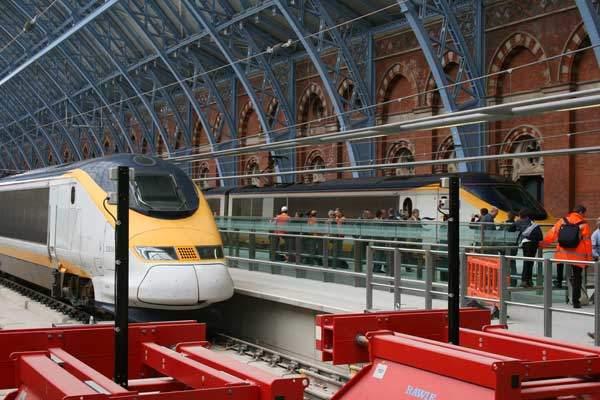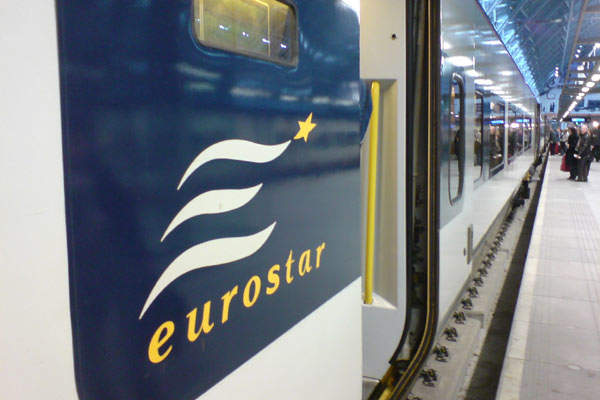iVENCS is a single 3D control software solution that operates across all communication and life-safety subsystems on major infrastructure projects. The software is particularly suitable for large railway stations.
Open-source, intuitive-interface PA/VA
iVENCS was successfully delivered as the control system for London’s St Pancras International station as part of an £800m project, the largest rail refurbishment in the UK for a century, which features the UK’s terminal for Eurostar.
3D control software for station communication and life-safety subsystems
ASL has won awards at St Pancras for provision of an intuitive, easily-scalable platform that uses open-source technology and distributed architecture. All 16 major sub-systems are controlled and monitored through one easy-to-use interface with over 7,500 field devices being covered.
As soon as an alarm is reported, operators can view a camera, rack room or panel to see the nature of the problem. Return on investment (ROI) is high since training overheads are slashed as operators become familiar with a complex building faster through a 3D model than through floor plans and text-driven menus. Even after brief exposure to the geography of a location, operatives using iVENCS immediately recognise a site’s layout on the software due to rich visual resource.
Software to drag and drop CCTV cameras, break-glass units and intercoms
Users with the correct authorisation can drag and drop CCTV cameras, break-glass units and intercoms at will, functionality that is in line with ASL’s commitment to ensuring clients can fine-tune their environment on a day-to-day basis. Cameras can be selected automatically by clicking any area on the map without the need to remember identification numbers, and precisely targeted announcements can be made over public address and voice alarm (PAVA) systems.
Open protocol and cross-platform support 3D control software
iVENCS features open protocols and cross-platform support. Well-documented interfacing tools mean customers can use ASL for setup as well as ongoing development or they can configure the system themselves and use other parties for maintenance. The client can choose freely between delivery partners, sub-system suppliers and computer platforms. Linux is used predominantly but Windows, Solaris and OS X all work effectively as operating environments.
‘Publish and subscribe’ and hot-standby multi-path redundancy
Data exchange is achieved through a distributed ‘publish and subscribe’ model which conserves network bandwidth. There are hierarchical access levels, meaning management and supervisory staff can ensure operators and system maintainers only access data relevant to their responsibilities.
The ASL software reflects changes in current visual expectations and the requirement for real-time, three-dimensional animation and fingertip control. A whole iVENCS network can operate from inexpensive commercial off-the-shelf (COT) hardware with low specifications. IVENCS employs hot-standby multi-path redundancy between severs and client workstations. In the event of one system going down, the user would notice a backup of half a second on monitors as the switchover occurs, meaning there is inherent protection from failure at any single point.
Commitment to open architecture and open-source tools extends to graphical rendering, and iVENCS is compatible with the 3D intelligent drawing system Google SketchUp. ASL is recognised for well-documented, up-to-date application programming interface (API) and provision of development tool kits to all system integration partners.
The company has followed the lead of Google and Cisco by using a ‘super protocol’ to communicate with the sub-systems of third parties, the chosen route being extensible messaging and presence protocol (XMPP), formerly known as Jabber.






